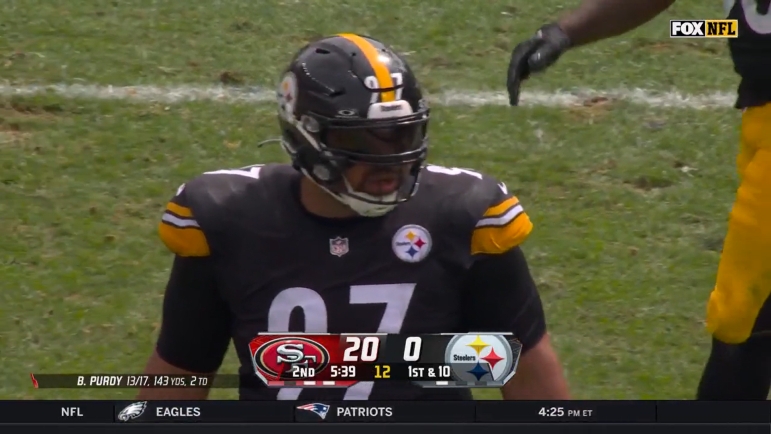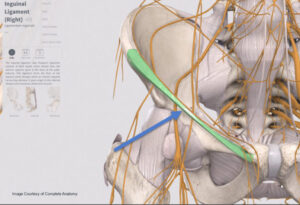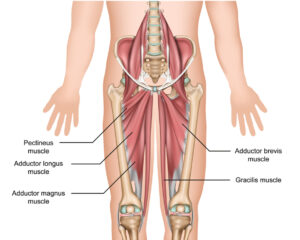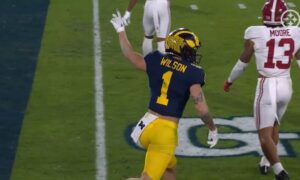For the Steelers and their fans, the bad news kept coming following a blowout loss to the San Francisco 49ers in the home opener. The injury list was long and included defensive co-captain Cam Heyward, who suffered a groin injury.
A true warrior, he tried to re-enter the game but returned to the sideline after one play and was done for the day. Now, it seems he may be done for quite a while. Monday, Mike Garofalo broke the news that Heyward is expected to miss multiple weeks, and will likely go on IR, with surgery a possible option.
Two hours later, the Pittsburgh Post-Gazette’s Gerry Dulac tweeted that Heyward would indeed undergo surgery in two days and was expected to miss up to eight weeks.
But wait, not so fast. An hour after Dulac’s news, ESPN’s Brooke Pryor reported that the defensive end would be seeking a second opinion before making a final decision. It is not clear whether Heyward will be seeing that surgeon prior to Head Coach Mike Tomlin’s weekly press conference today at noon ET, so we may have to wait for clarification. In the meantime, let’s look at what a groin injury means for an NFL player and what the recovery time might be, depending on the treatment.
ANATOMY
As always, we start with the anatomy. The groin is the area between the abdomen and the thigh. The separation is marked by the inguinal ligament, a band of strong, fibrous tissue that runs between the pubic bone to the anterior superior iliac spine, serving as an insertion point and the separation of the abdominal muscles and the thigh muscles. It is indicated here by the green line:
While the term groin injury is not very specific, when it comes to the NFL, it typically means an injury involving the adductor muscles, a group of muscles in the medial thigh, as shown here:
The adductor muscles originate from the pubic ramis (the loop of bone on the front of the pelvis) and insert on the femur (the thigh bone). These muscles serve to bring the leg back in to the central axis (back toward the middle) and stabilize the pelvis on the leg during gait.
When a groin injury occurs, it typically results from a strong force on the muscle, causing a tear or the muscle or the muscle tendon junction. The extent of the tear determines the severity of the strain, as summarized by www.physio-pedia.com:
- Grade 1: no loss of function or strength. Muscle tears can show normal appearances or a small area of focal disruption (<5% of the muscle volume), with hematoma and perifascial fluid relatively common on imaging with US and MRI.
- Grade 2: severe, with some weakness. Injury corresponds to a partial tear, with muscle fiber disruption seen (>5% of the muscle volume) but not affecting the whole muscle belly. In acute grade 1 or 2 strains of the adductor muscle, there is intense pain in the groin area, like a sudden stab with a knife, if the athlete attempts to continue the activity. Locally a hemorrhage and swelling can be seen a few days after the injury. A typical trauma history, localized tenderness and difficulties to contract the hip abductors.
- Grade 3: complete muscle tear and complete functional loss. Injuries are complete muscle tears with frayed margins and bunching and/or retraction of the torn muscle fibers. Complete muscle tears or grade 3 strains are most often found in the distal musculotendinous junction located toward the insertion on the femur.
You can see the play where Heyward was likely injured here, and it appears that the lunge he made to get to 49ers quarterback Brock Purdy caused the injury:
NON-OPERATIVE TREATMENT
Initial treatment is geared toward reducing swelling and managing pain, which is the usual combination of rest, ice, compression and elevation. Anti-inflammatory medications are the typical pain relief used. Once the pain has improved, physical therapy and massage can be helpful. Platelet rich plasma (PRP) therapy has also been used to improve healing.
With this treatment approach recovery time estimates for return to activity depend on the grade of the strain:
- Grade 1: one-to-two weeks
- Grade 2: three-to-six weeks
- Grade 3: three-to-four months
OPERATIVE MANAGEMENT
With more severe strains, surgical repair may reduce recovery time and even provide better long-term results. If there is a complete tear of the muscle and tendon, surgery to reattach the muscle to the bone is performed. In the scenario of an avulsion, the tendon is torn away with a portion of the pubic bone where it attached. Surgery to reattach the tendon and bone can be performed.
Surgery is aimed at anchoring the muscle and tendon back to the bone through an incision in the groin. Average recovery time is 10-12 weeks for return to play but it varies based on the severity of strain, surgical technique, and time from injury to surgery. Delaying surgery for weeks can result in muscle retraction, making surgery more difficult and recovery longer.
SUMMARY
Given that Cam Heyward has been recommended to undergo surgery by at least one physician, we can assume that he does not have a Grade 1 strain. Most likely, he has already undergone an MRI for evaluation of the extent of his injury. And if he is weighing both operative and non-operative approaches, it’s possible that his strain is somewhere between a Grade 2 and 3 rather than a complete tear.
For now, we need to wait for further updates regarding the type of treatment Heyward will pursue. Obviously, he needs to make the decision that is best for his health and long-term outcome. If he is given both options and knowing his commitment to this team and his competitive nature, I would guess that he will choose the path that gives him the best chance to rejoin his teammates on the field again this season.
“Melanie H. Friedlander, M.D., F.A.C.S. is a board-certified general surgeon at the Association of South Bay Surgeons in Torrance, California. She has developed and published many scientific studies in highly esteemed medical journals.”










